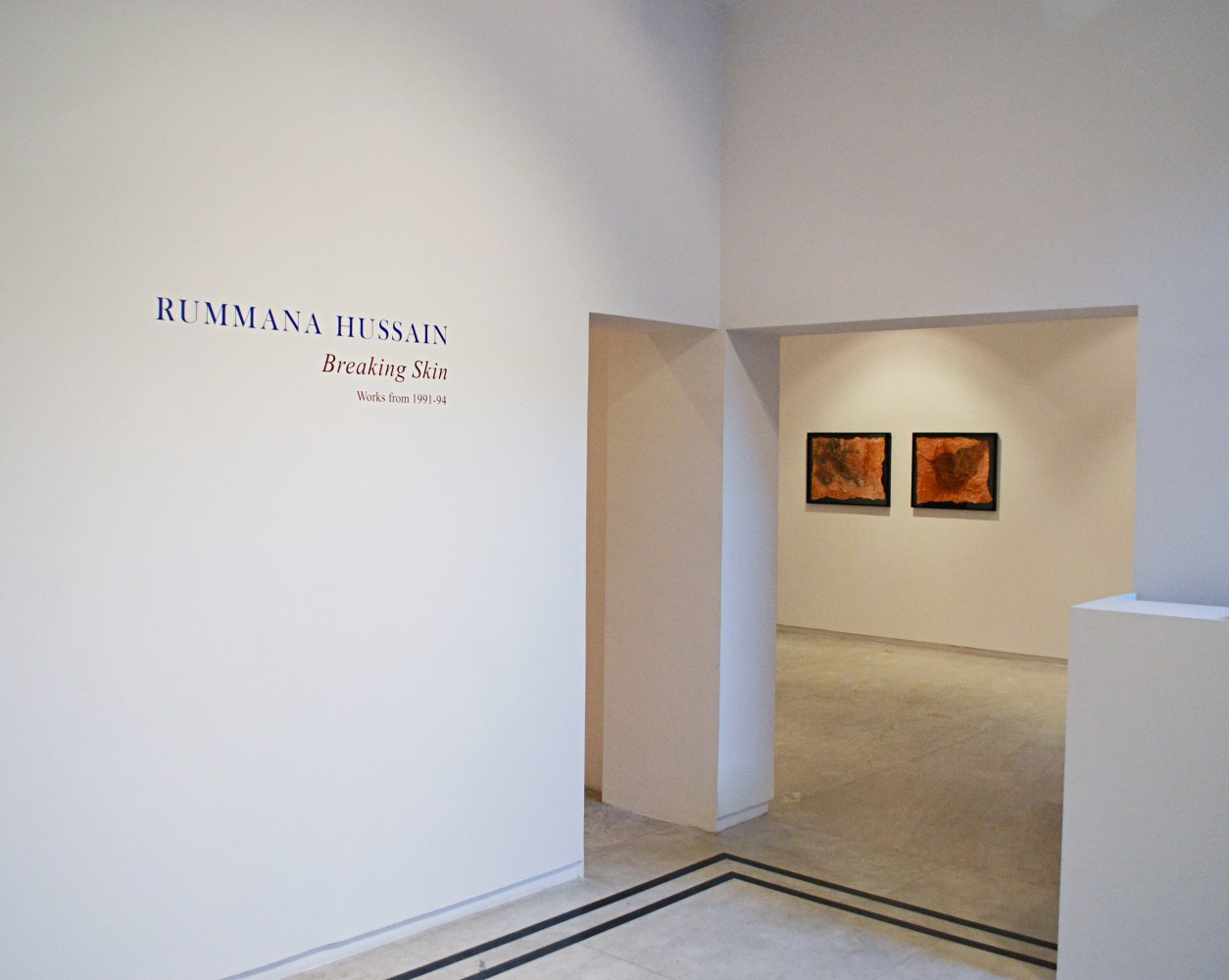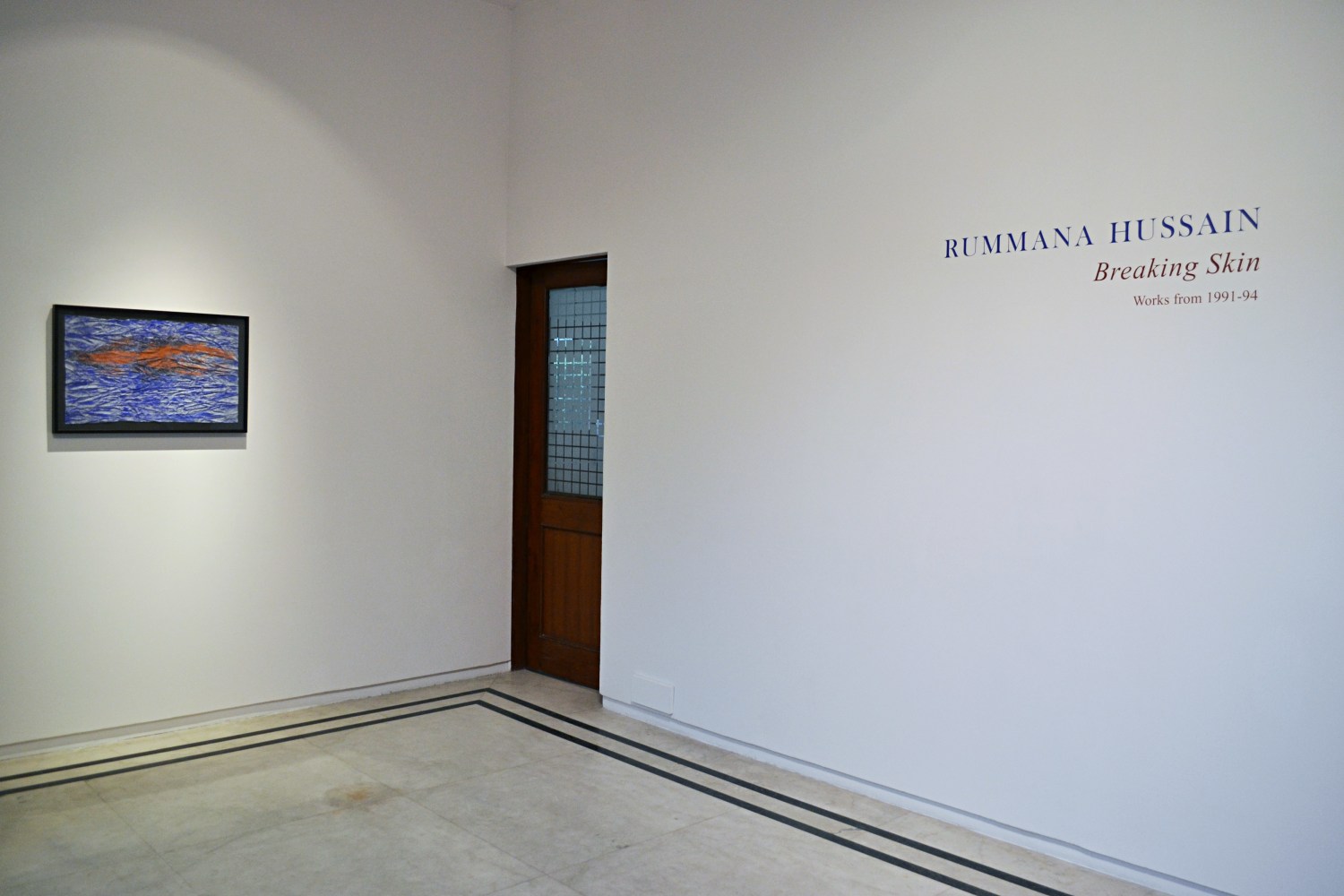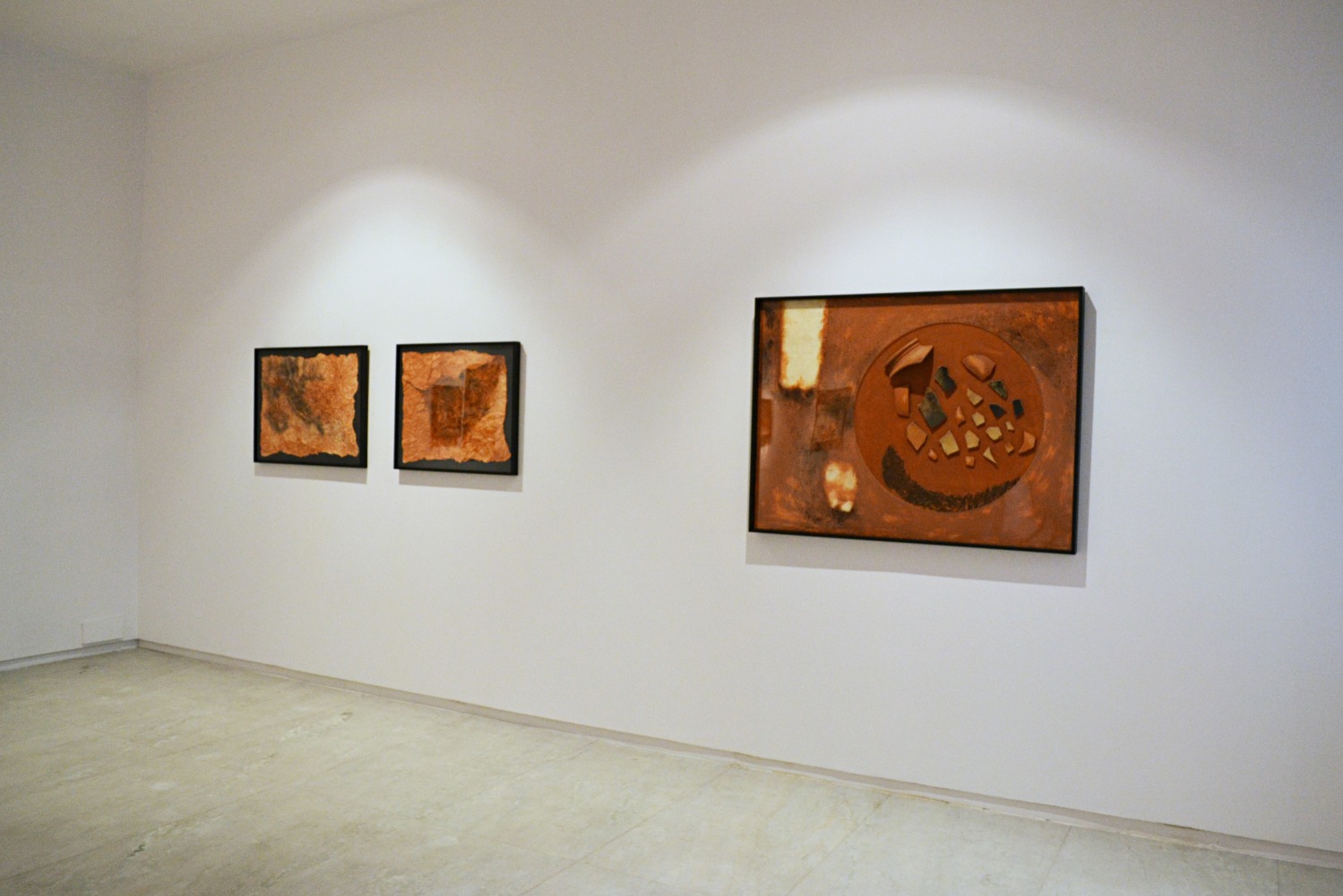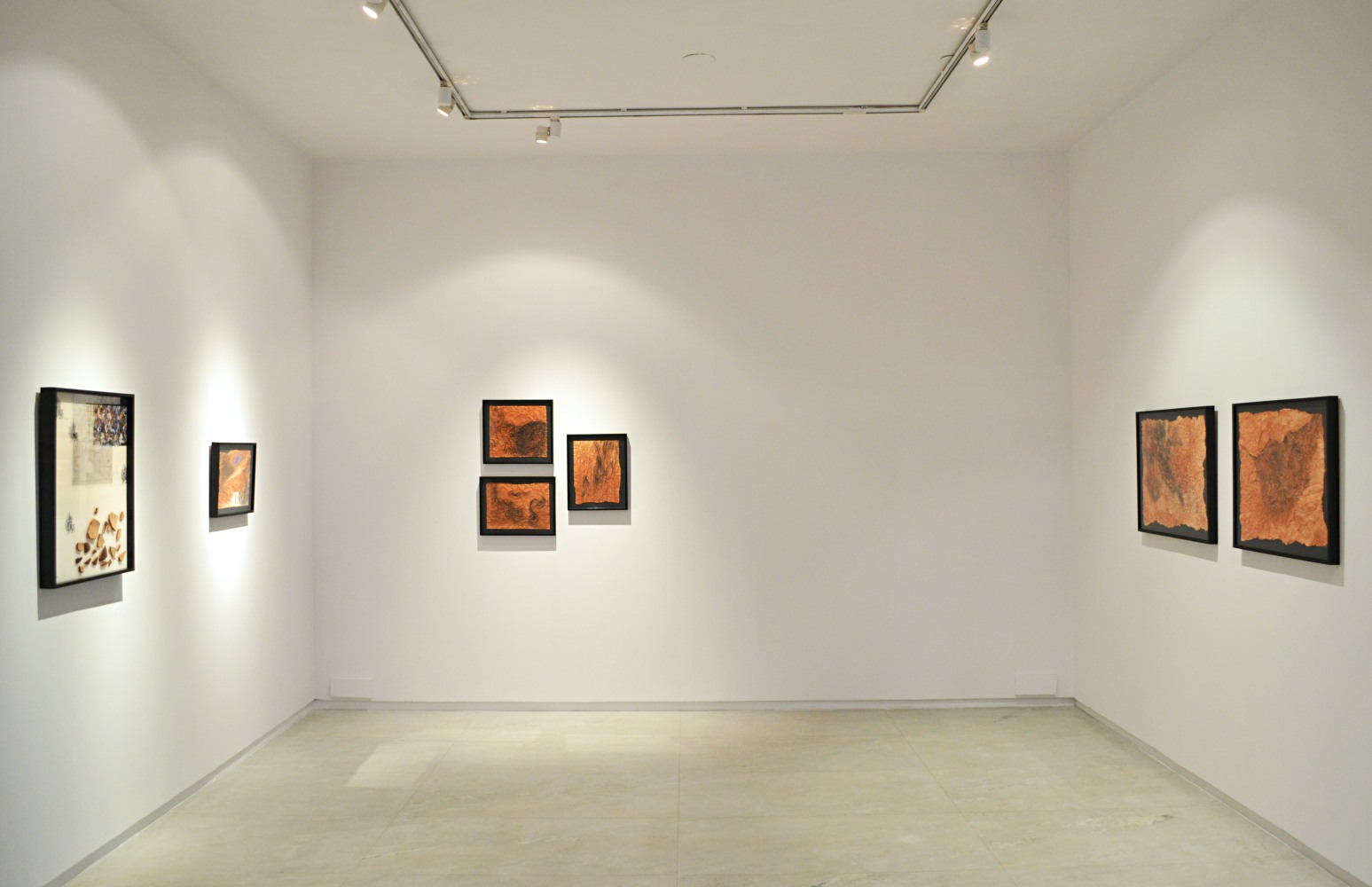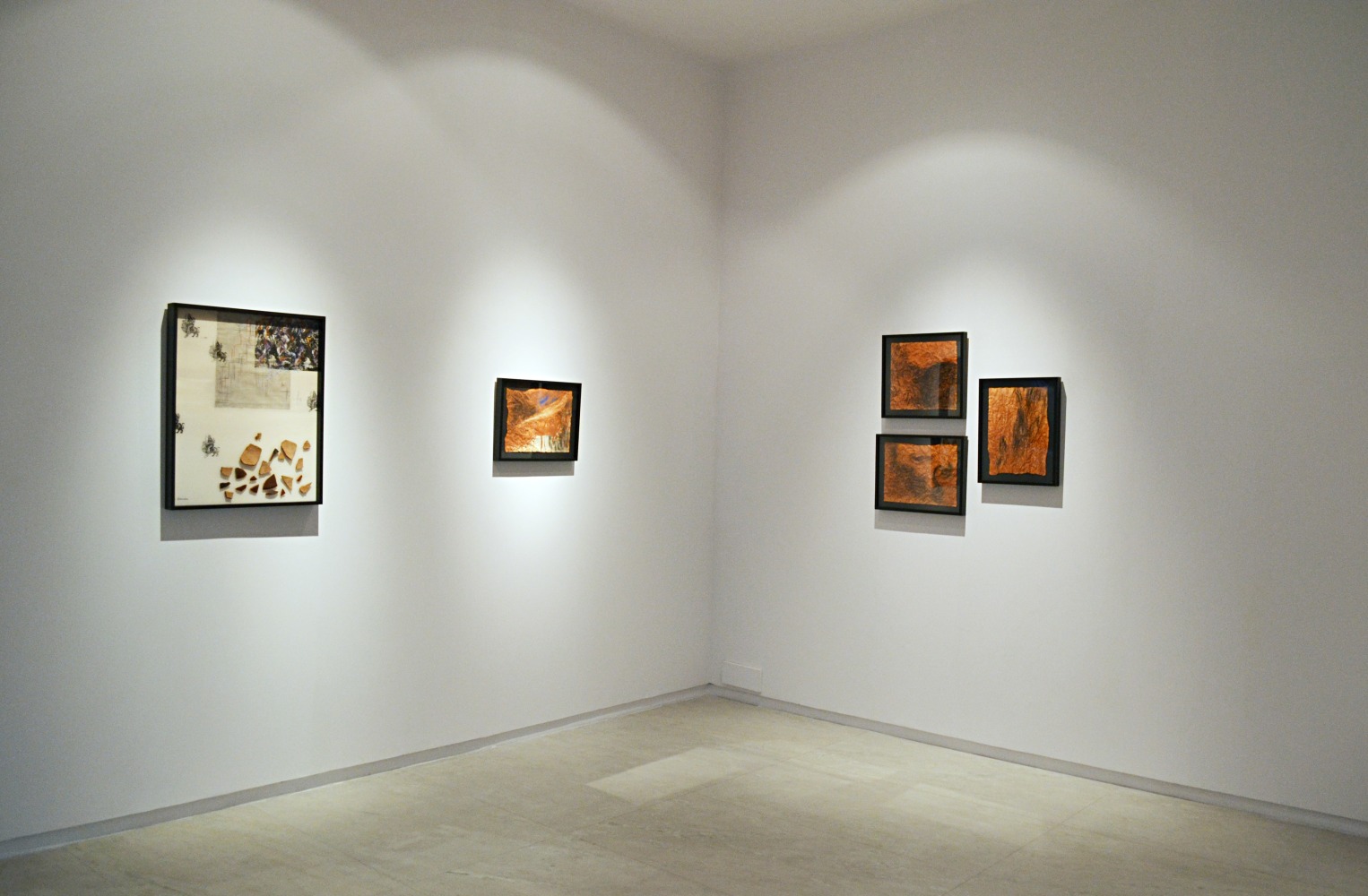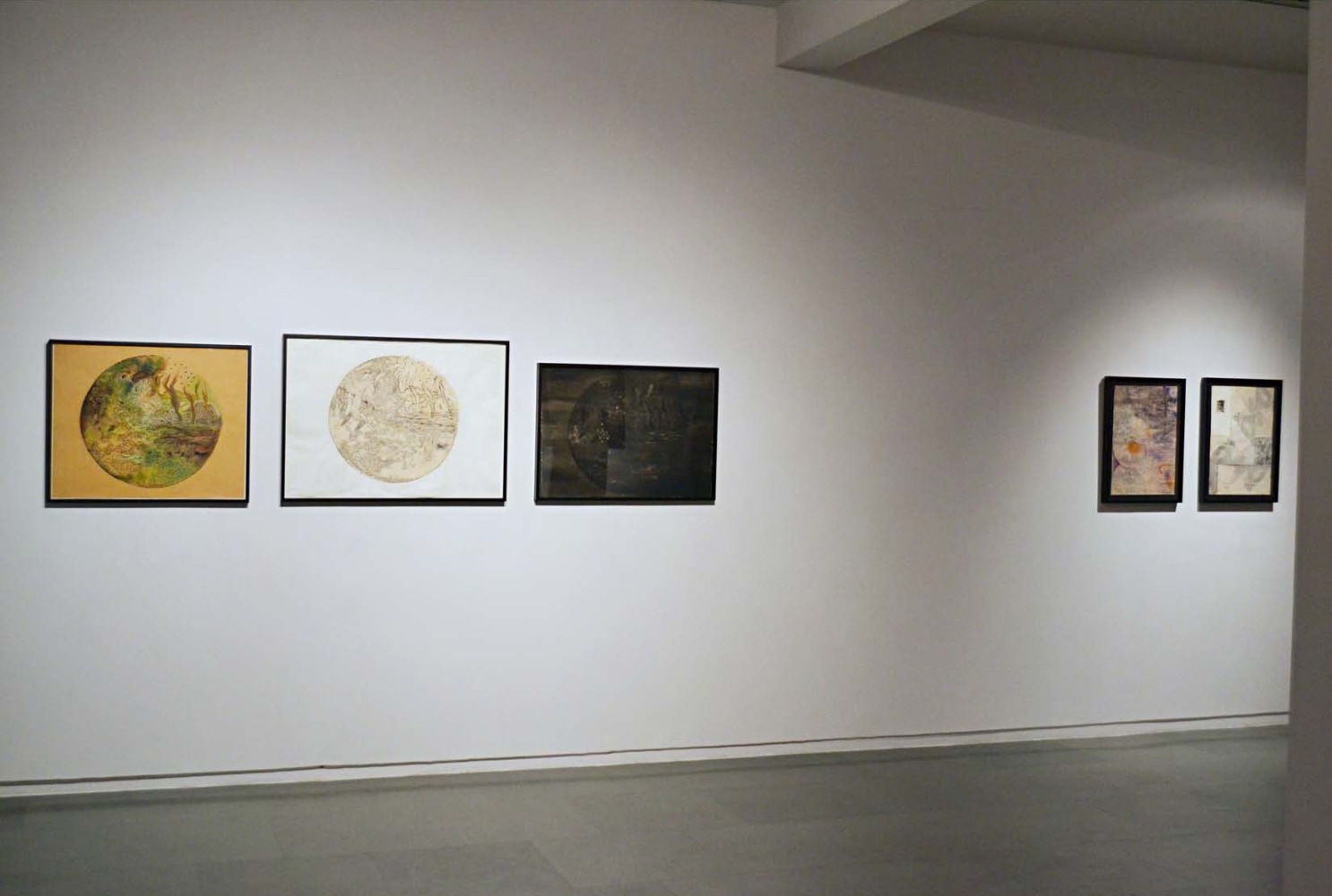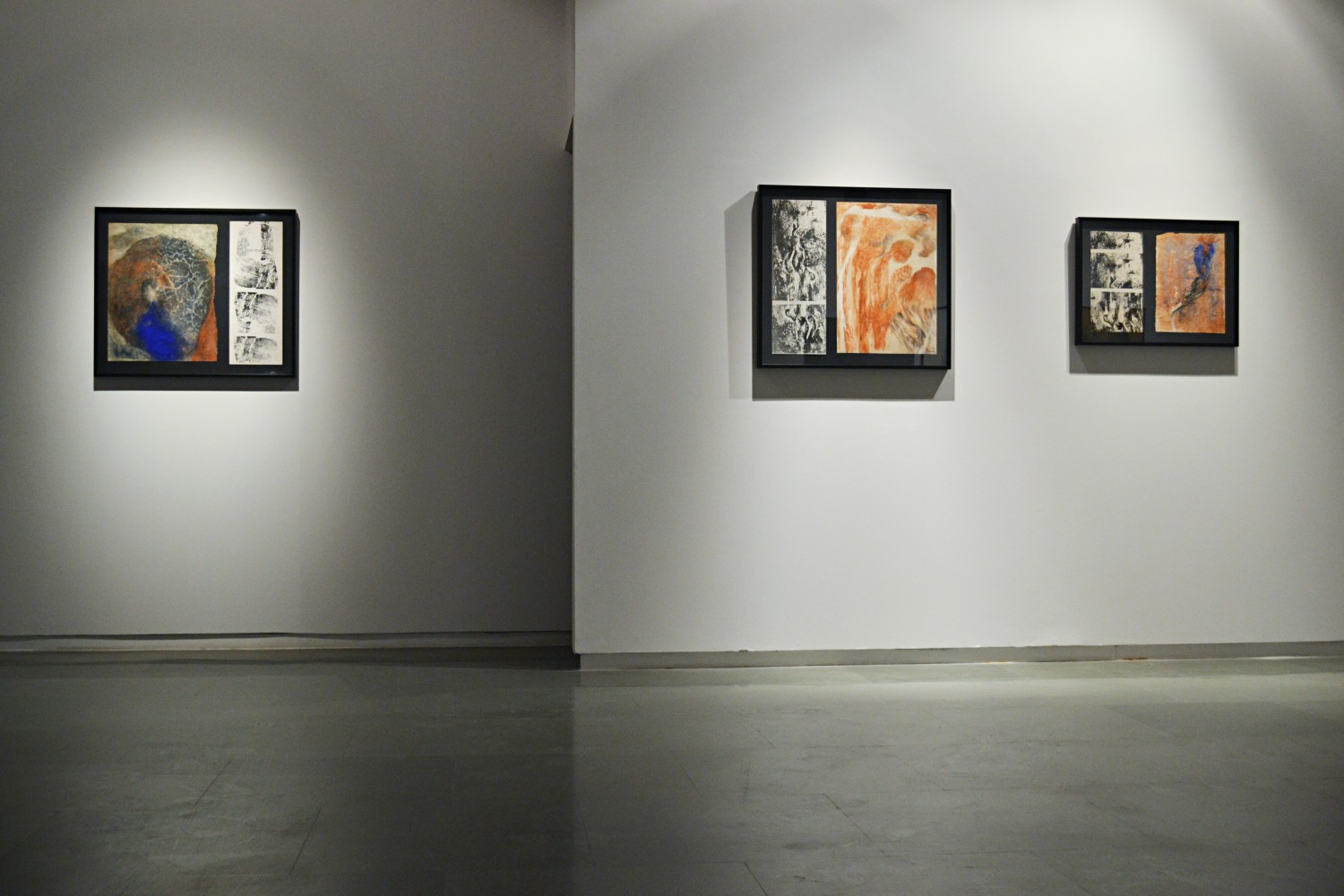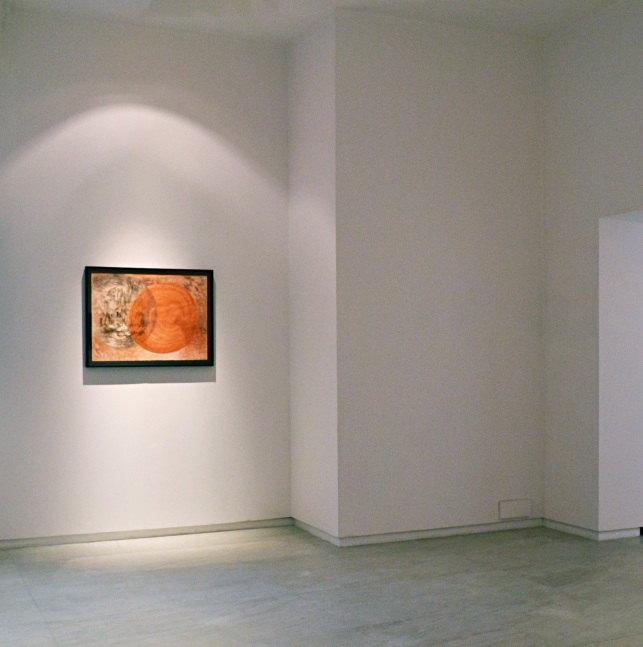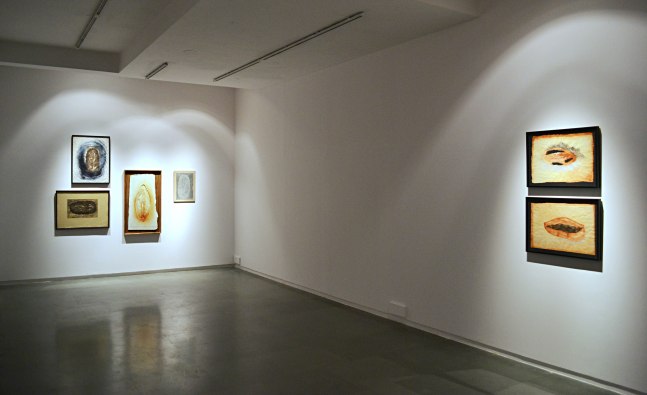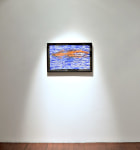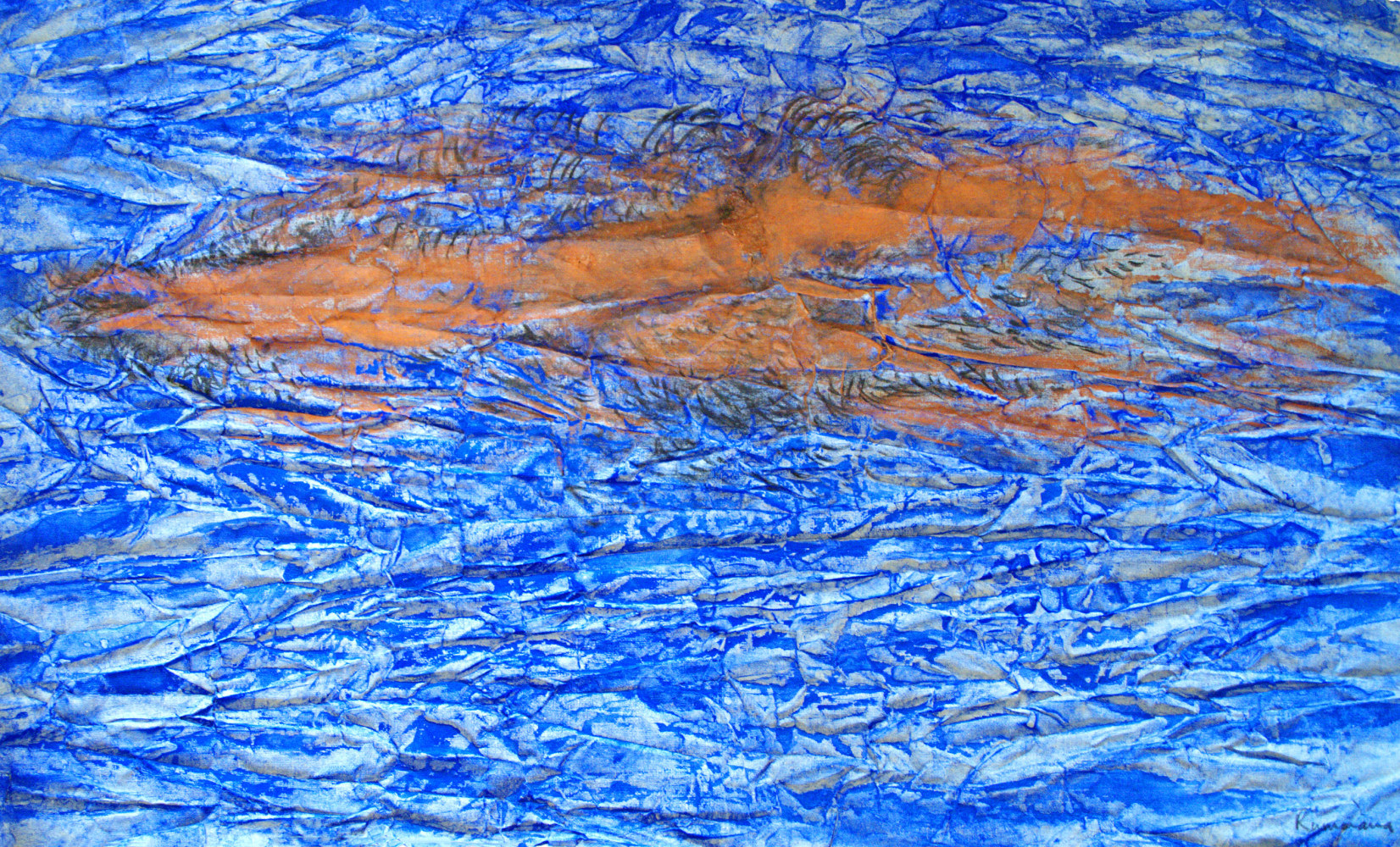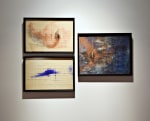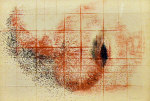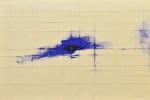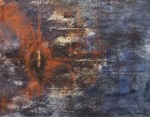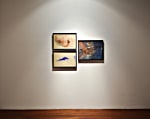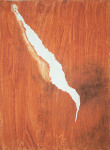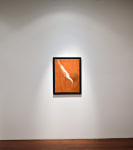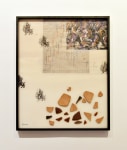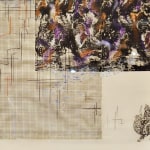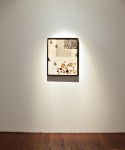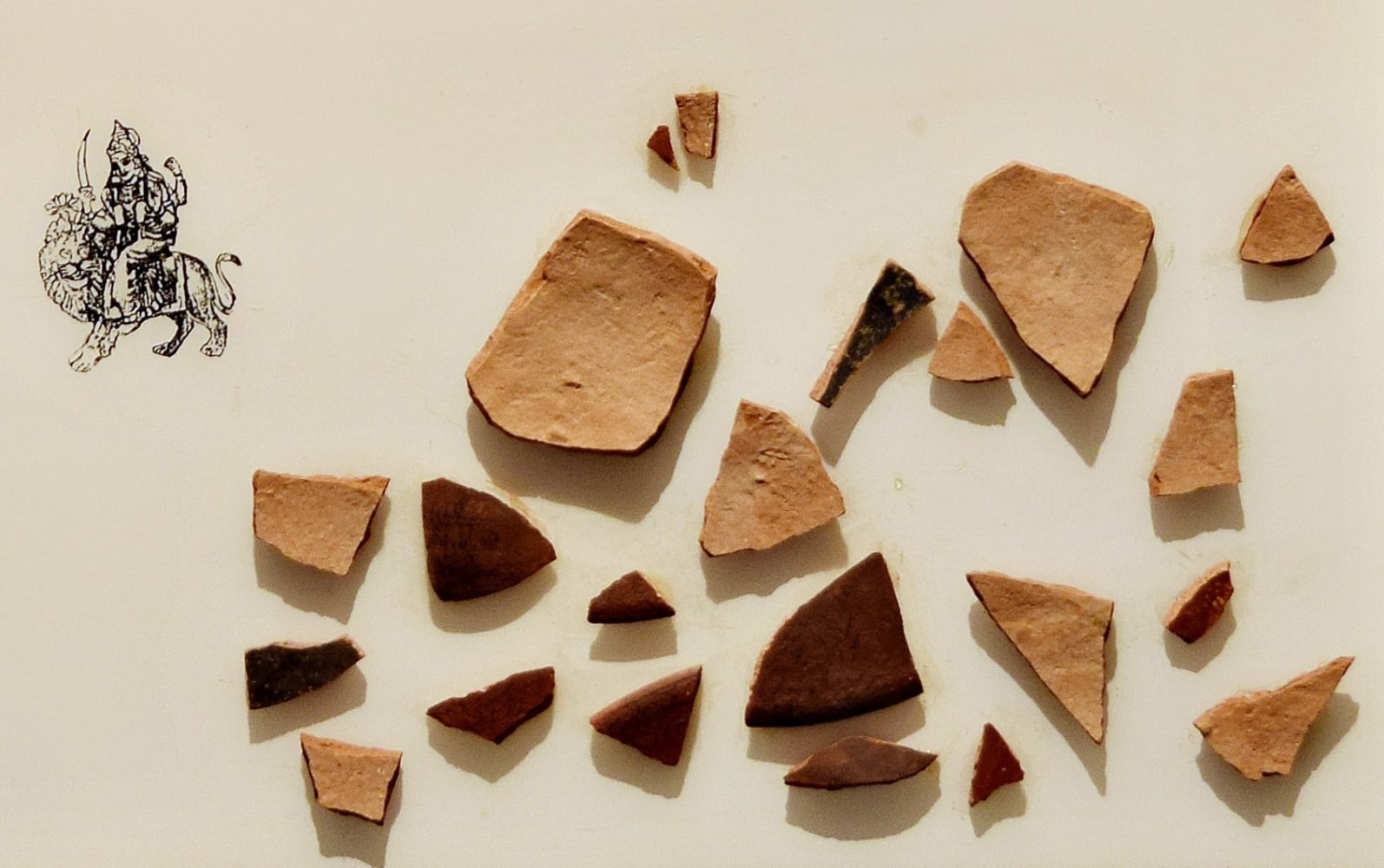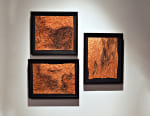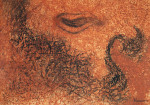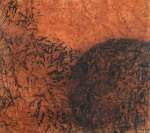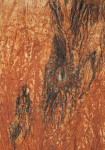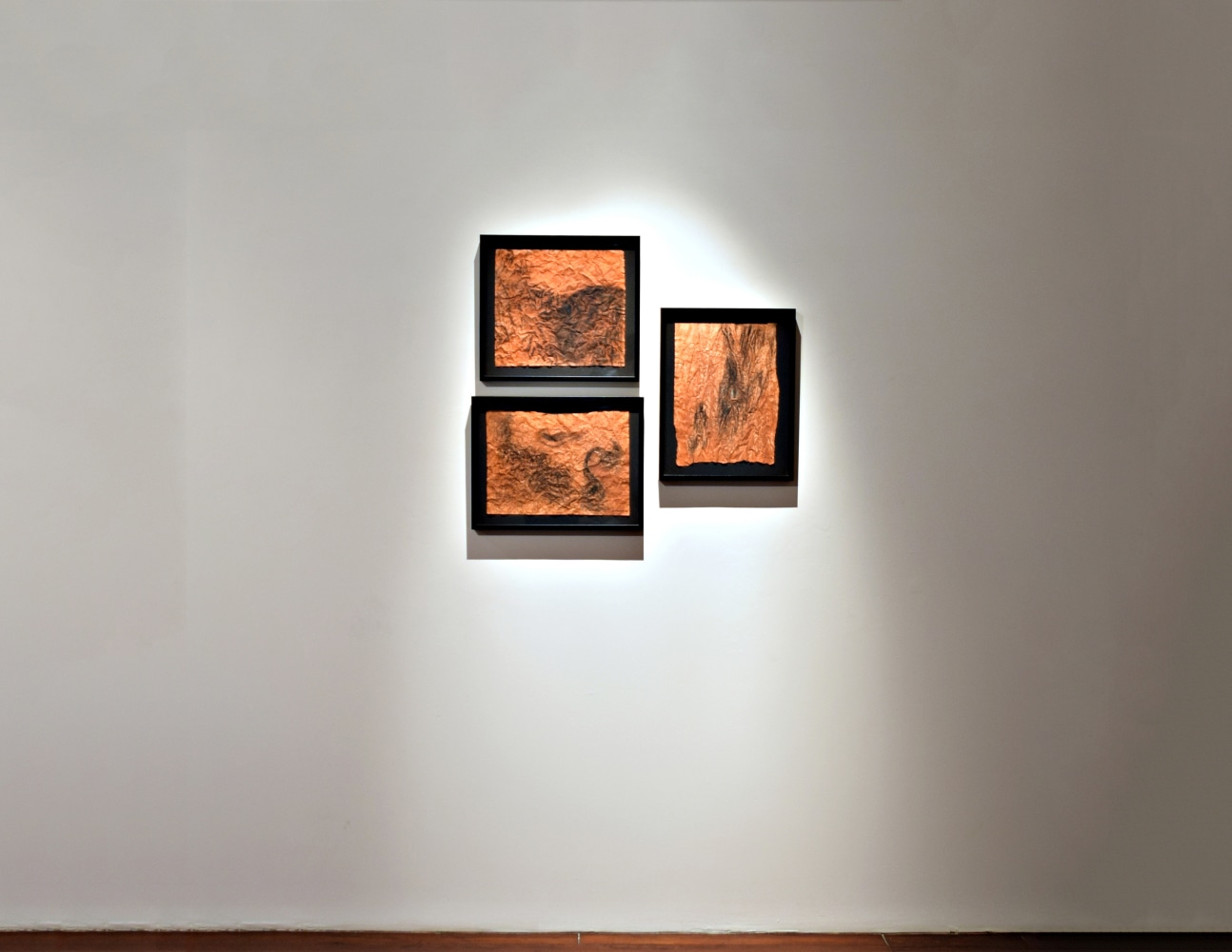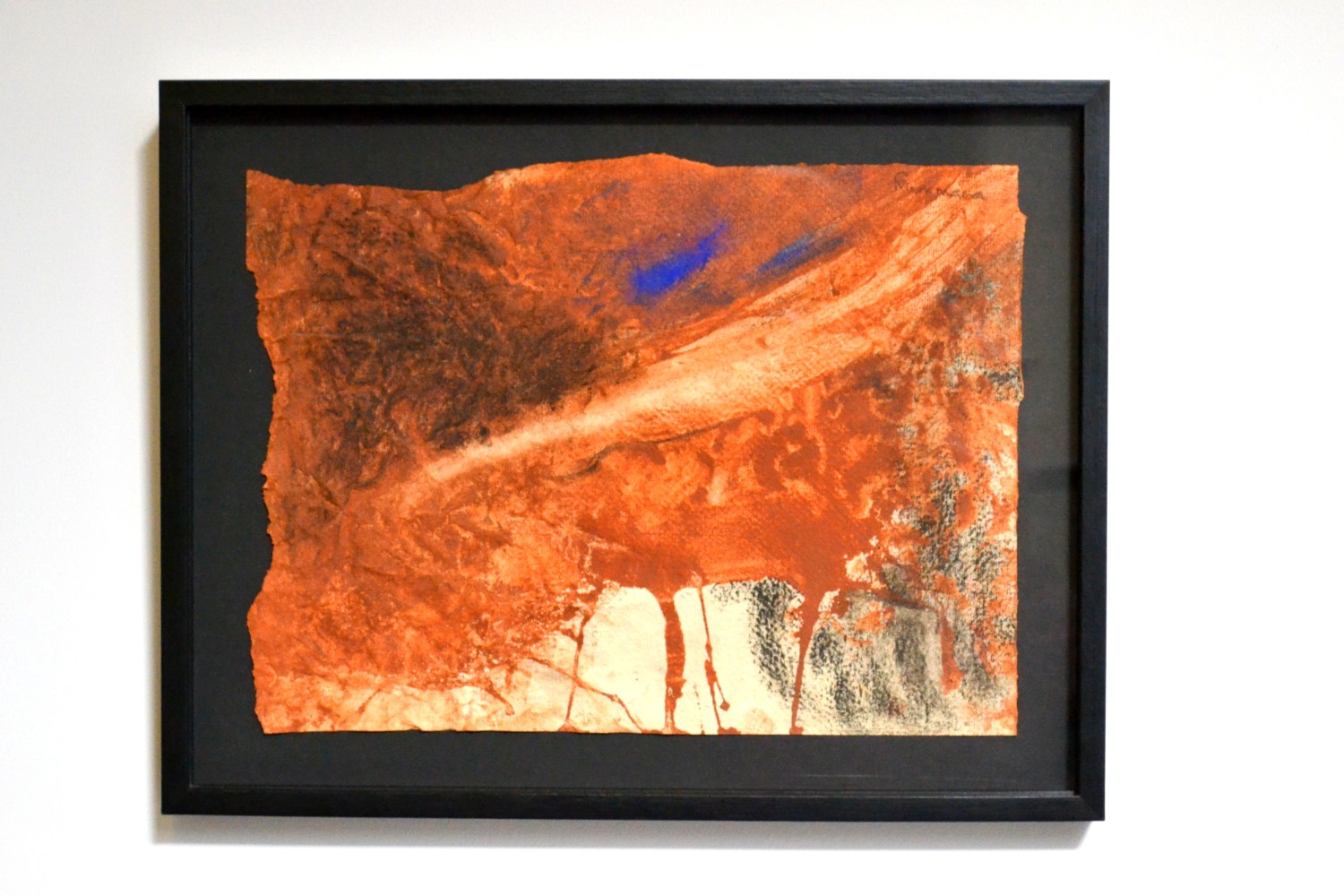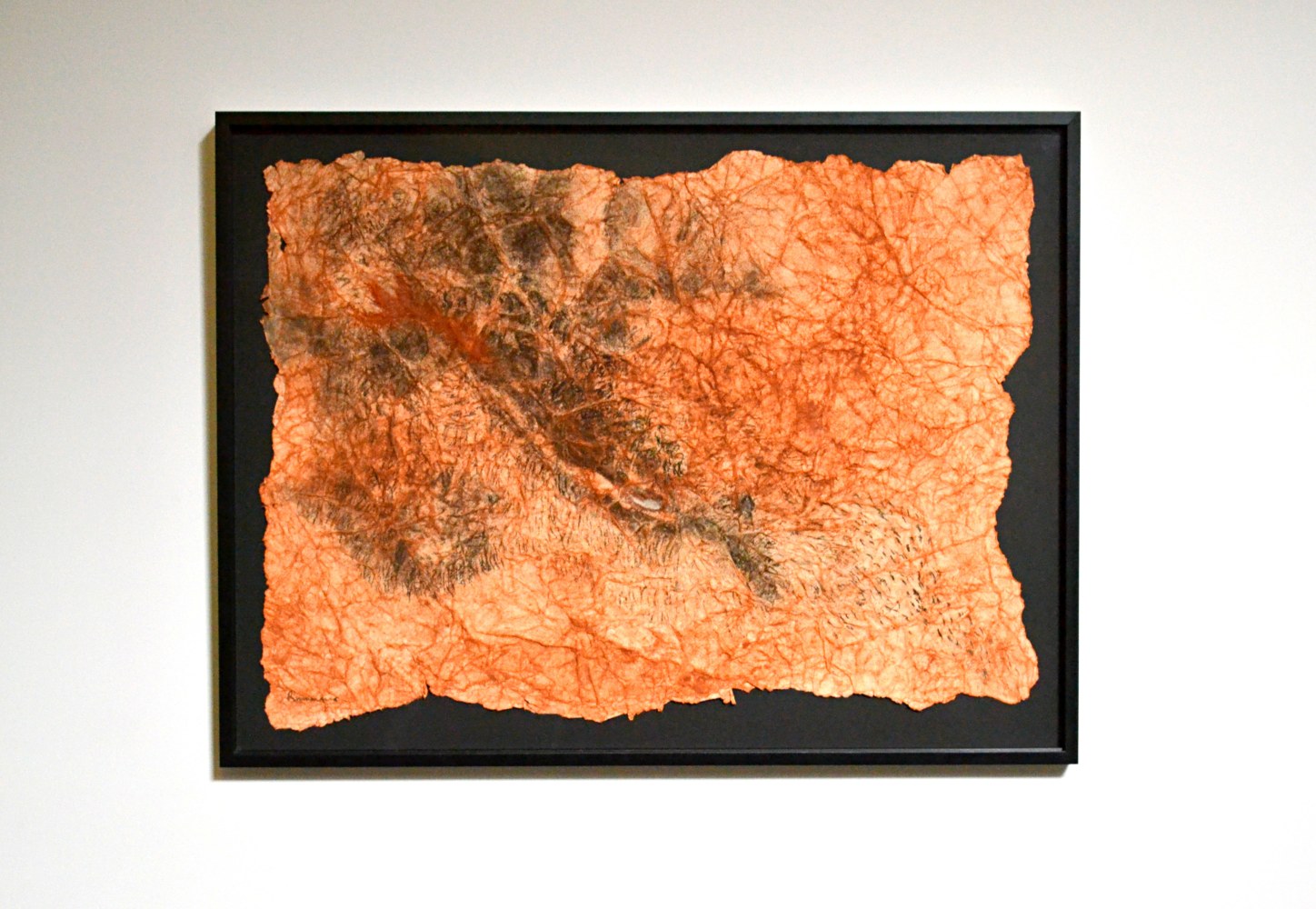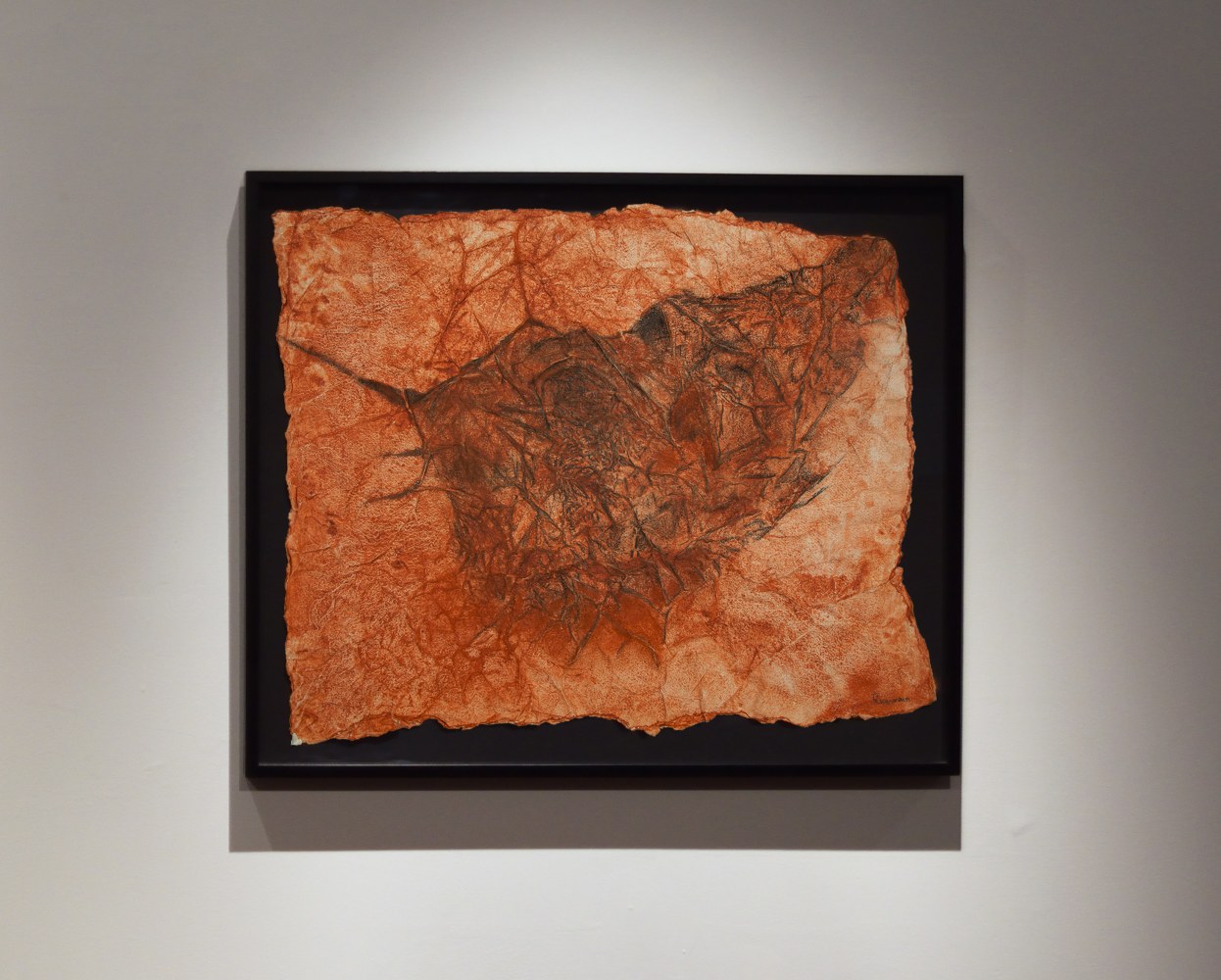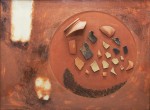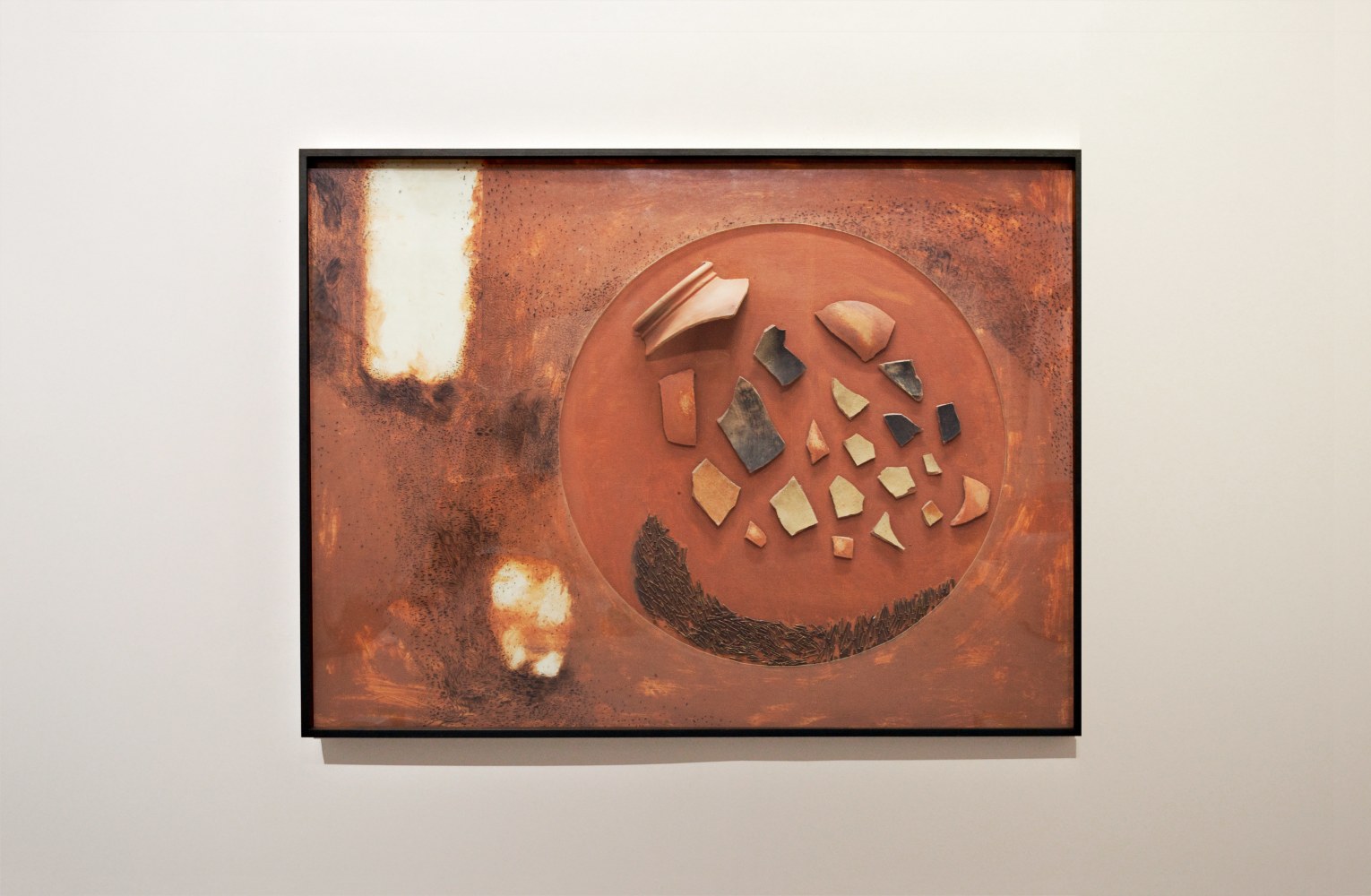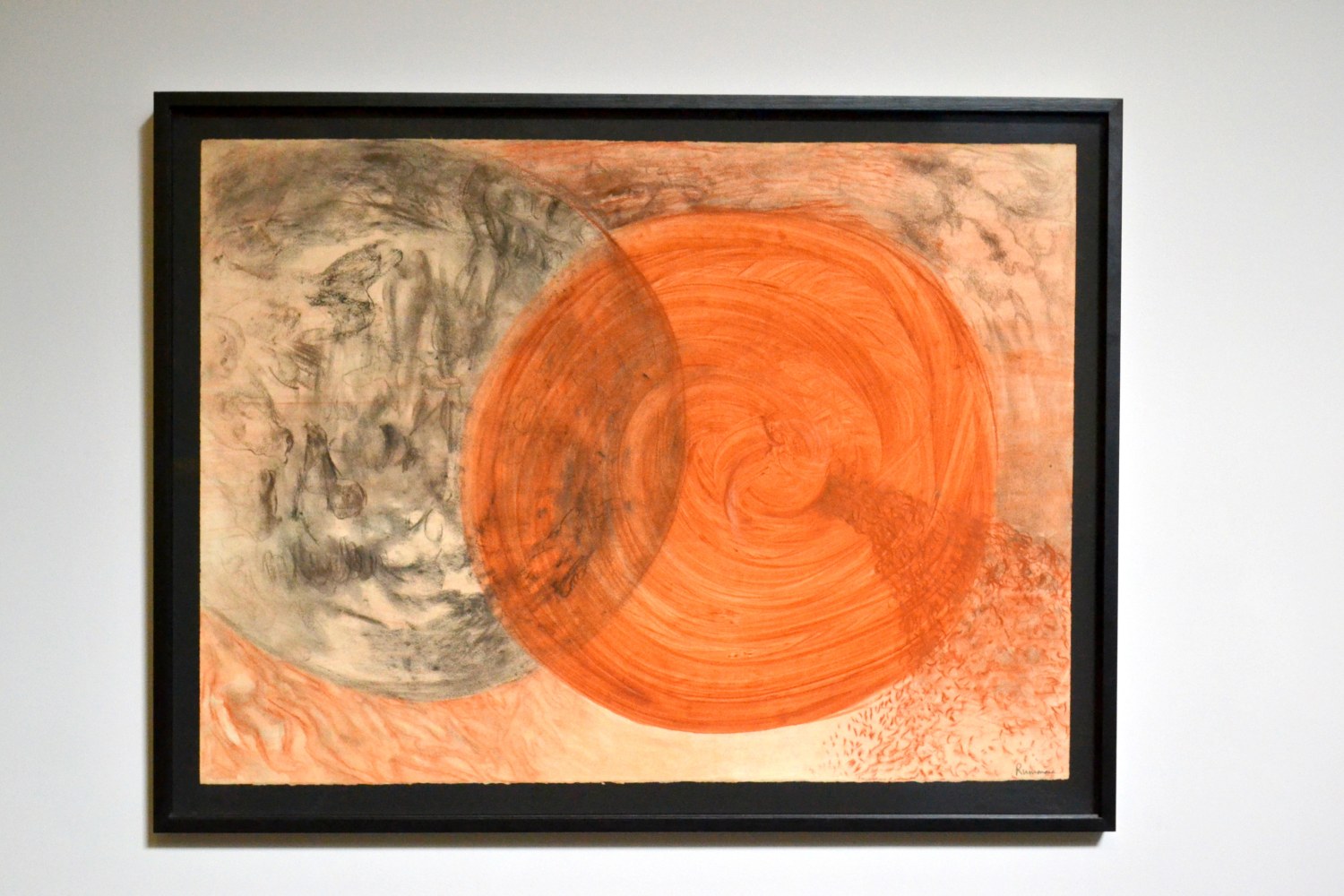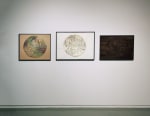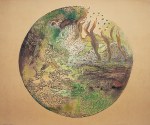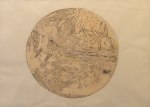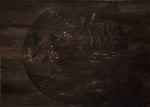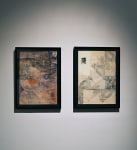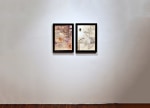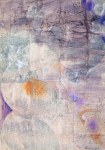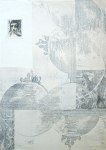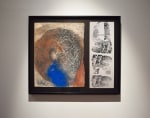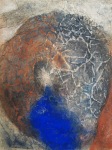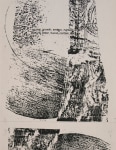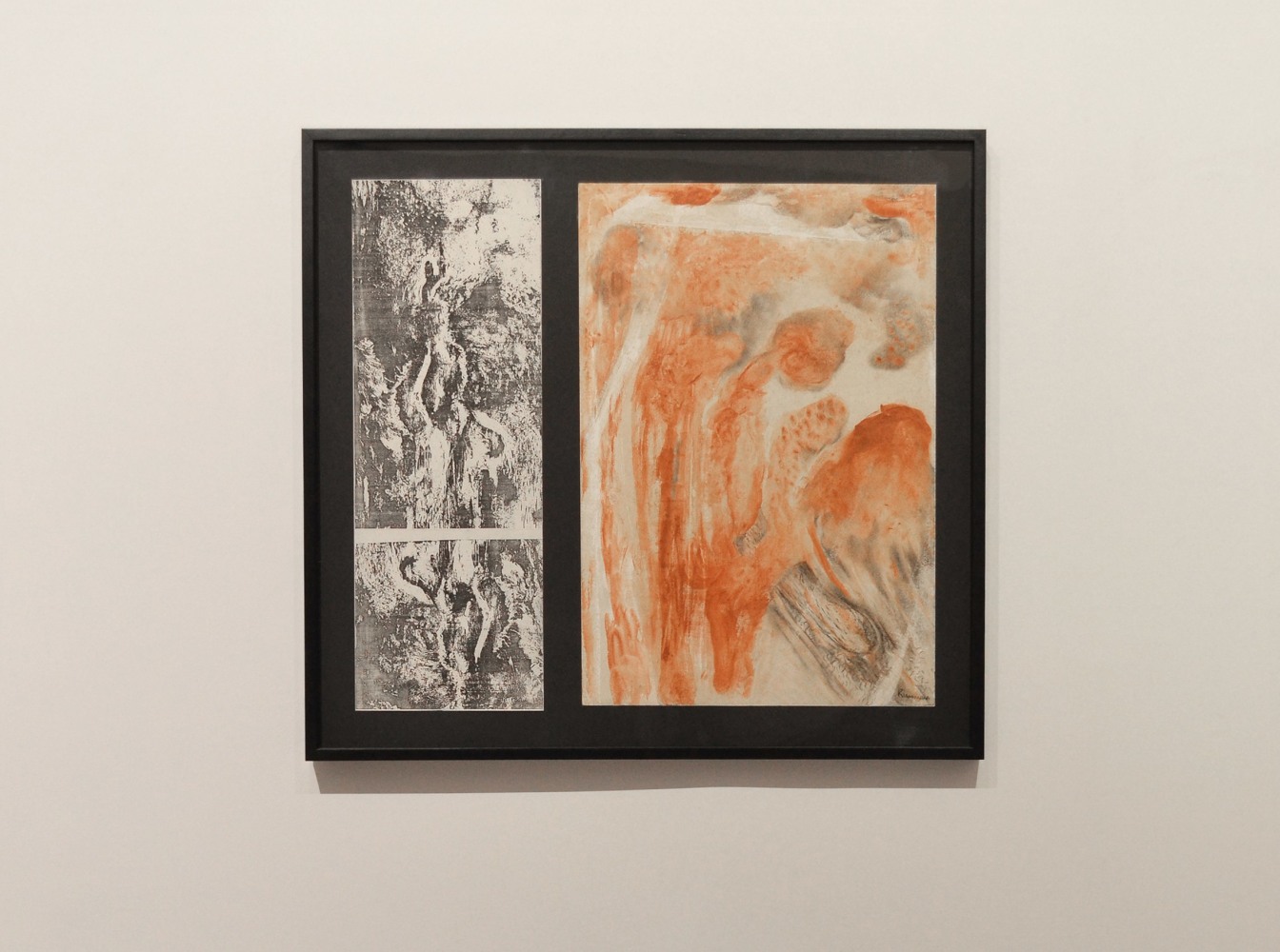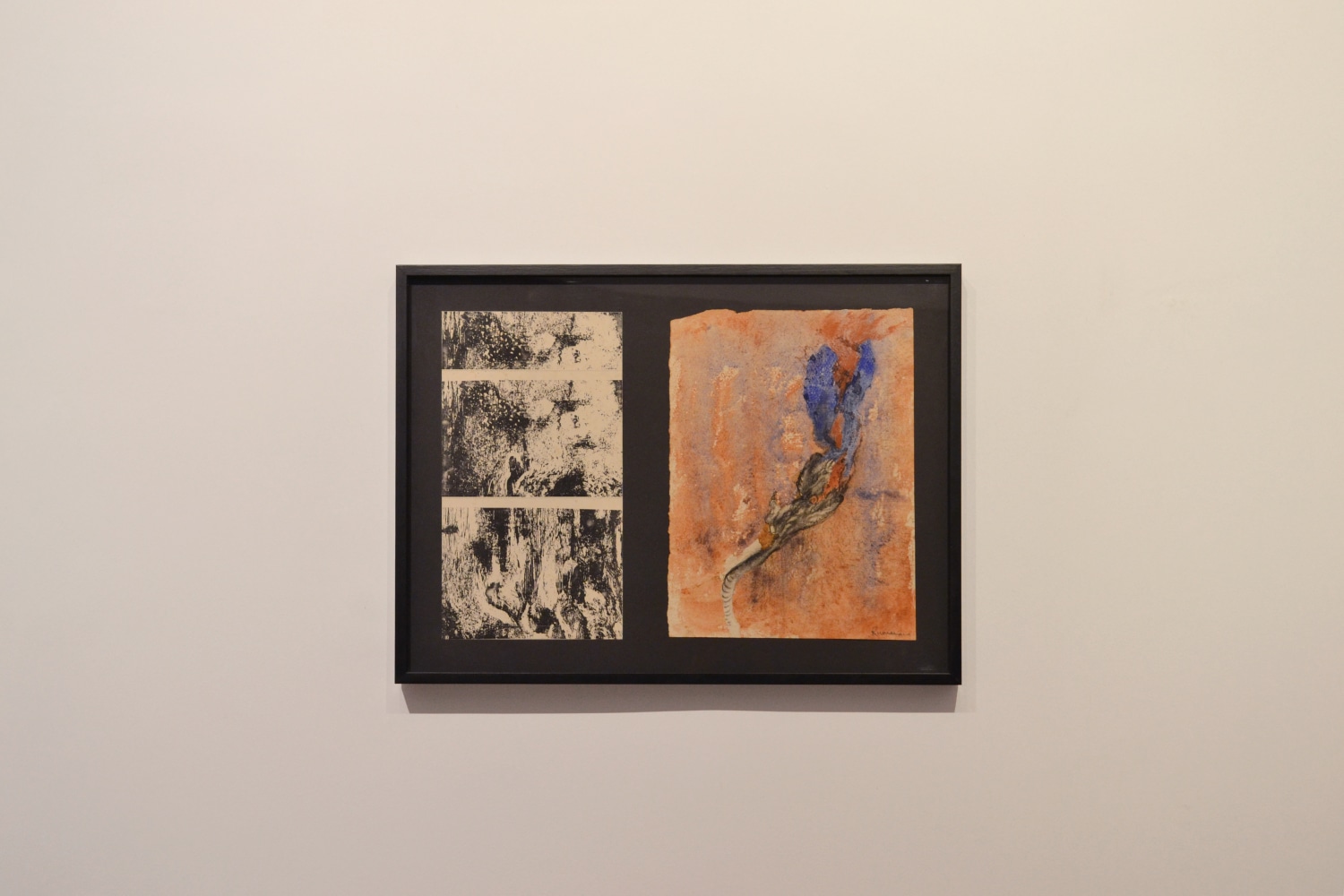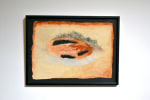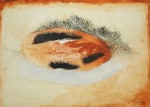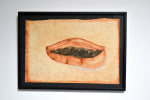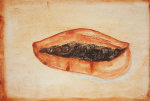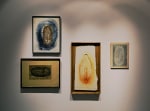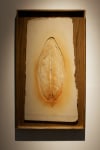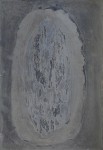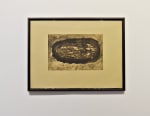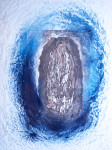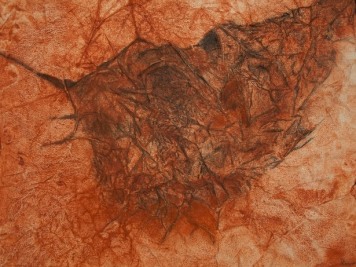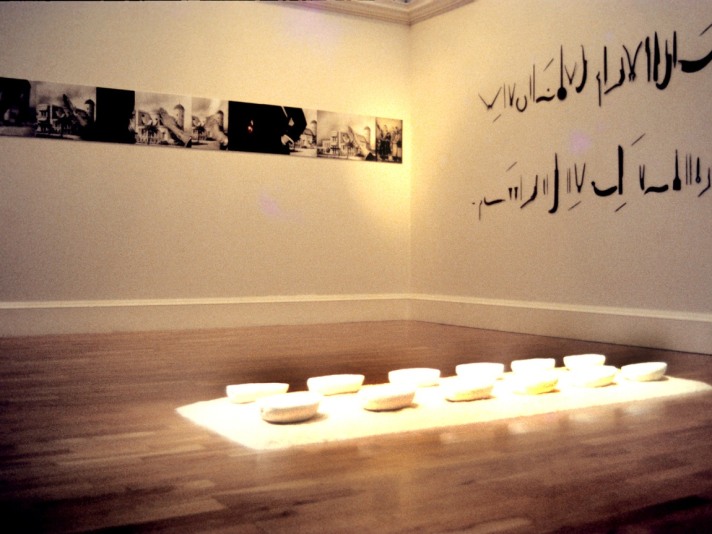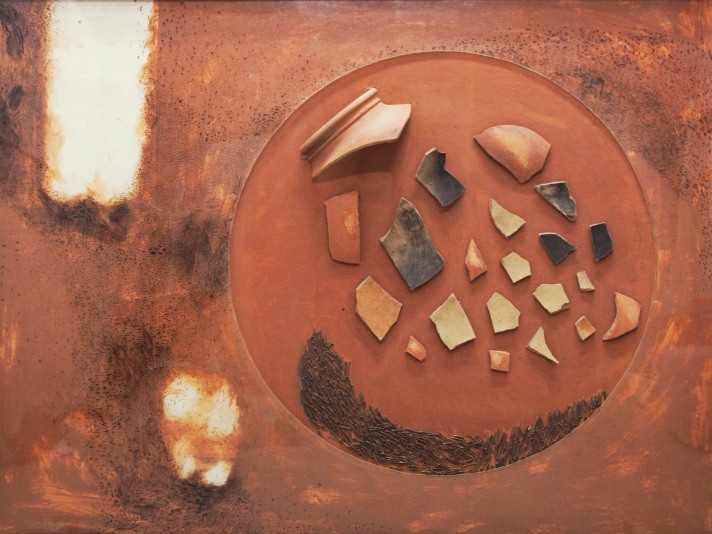
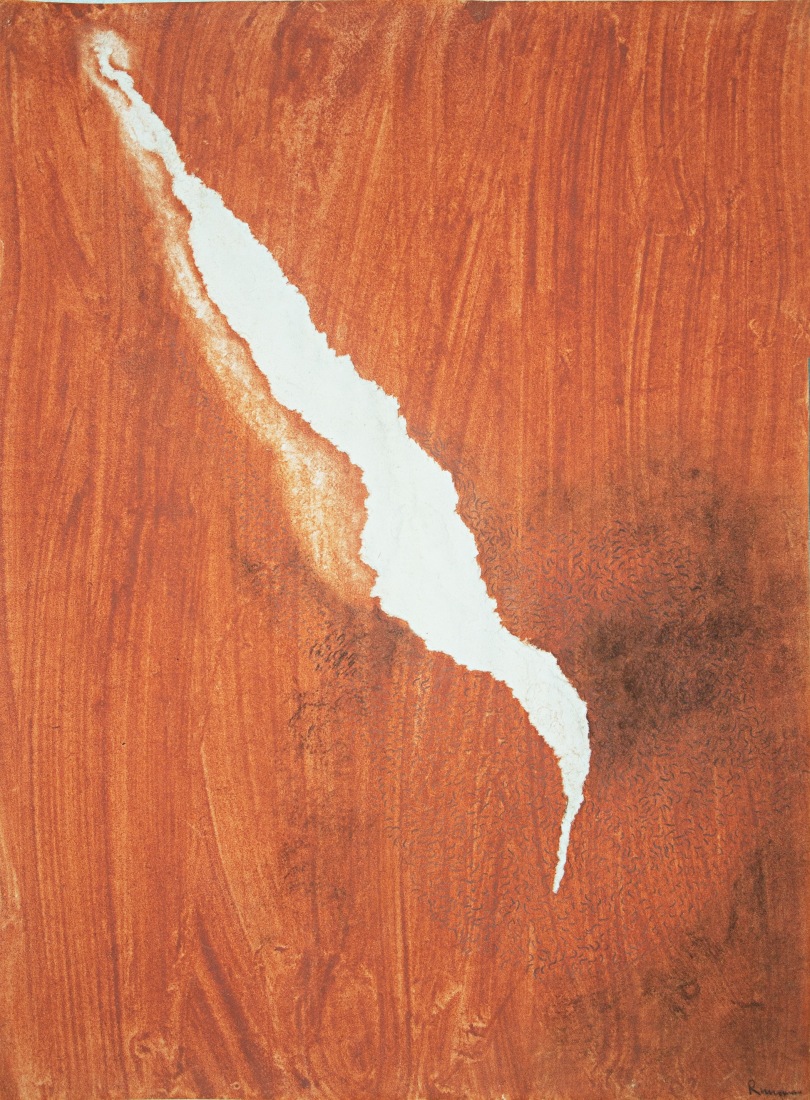
Yoni, 1993
Rummana Hussain's oeuvre exists in two parts—one, her early figural works on canvas and paper from the 1980s, and the other her sculptures, installations, and performance works that were among the first to appear in India in the 1990s. These two very seemingly dichotomous bodies of work suggest a disjuncture rather than a gradual progression in her practice.
In Breaking Skin, we present a body of work from the early 1990s that reveals a process of transition from the figurative to the abstract, from allegorical to a direct and bold confrontation, from flat painted two-dimensional planes to textured and ravaged surfaces in diverse media, from a veiled exploration of self to a public, vulnerable personal awakening.
Rummana's earliest departures from the figural painting were experiments in abstraction that remained on paper. She employed xerox, watercolor, indigo, earth pigment, charcoal, terracotta on paper. But perhaps more significantly they were applied not just by brush, but rubbed in, imprinted on crumpled, torn, or creased paper. Titles such as Movement, Fluid, and Fetal Echo that were part of Bodyscapes series signaled for her a newfound awareness of the body not just as an instrument, but the site itself for art-making. These works which focus on the female body, the site of simultaneous violence and fecundity, would continue to remain important throughout her oeuvre; leading not only to the subsequent Tunnel Echoes works but to the images of feminine fertility—the halved papayas, the open mouths, and domes—that continue to reappear in her later works.
“Breaking Skin” served as a testimony to how Hussain, who succumbed to breast cancer at the age of forty-seven in 1999, succeeded in forging an imagery that was deeply personal and yet capable of articulating more universal concerns.
ARTFORUM
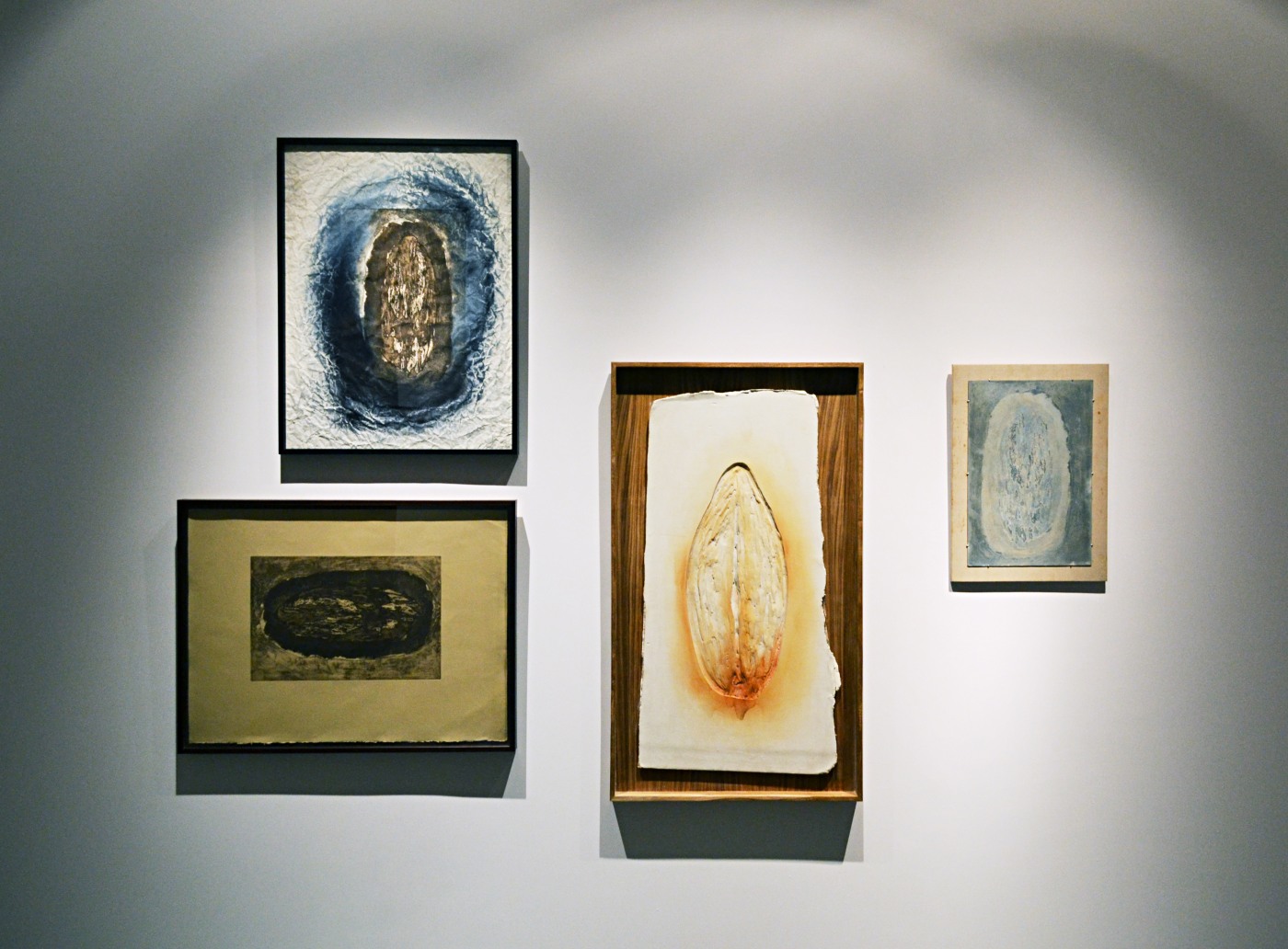
Tunnel Echoes, 1994
During the early 1990 Rummana increasingly turned away from the materials of traditional "high" art, appropriating the material of domestic work—gheru, indigo, terracotta—as creative tools. With this purposeful gesture, Rummana placed woman—the real, physical being who cooks, cleans, and gives birth, who struggles and soothes, who bears the mark of days lived—at the center of her work. Digging past the archaic symbolisms that at the time surrounded the female body - woman as a pure virgin, as the body of a new Indian nation-state, as mother-guider—Rummana presents a view of the individual woman, in all her complexities. Her mixed media work began to allow these multiplicities to emerge and remain: organic curves mapped over a textural grid, as in Love Over Reason, or multiple versions of the same image, different in coloring and size, as in the Dissemination series. The arc that began with these works, and the growing comfort with the plurality that accompanied it matured into her later seminal works of Home/Nation and Tomb of Begum Hazrat Mahal.

